Last updated: August 4, 2020
Article
US Women's Suffrage Timeline 1648 to 2016
This is an extended timeline of the fight for women's suffrage in the United States. It includes information on failed and successful attempts at changes in law, including at the state and federal levels, how women's suffrage has been interlaced with quests for other civil rights, and some key court cases. It spans the years from 1648, when Margaret Brent demands but is denied a vote in Maryland's colonial assembly through 2016, when Belmont-Paul Women's Equality National Monument was designated.
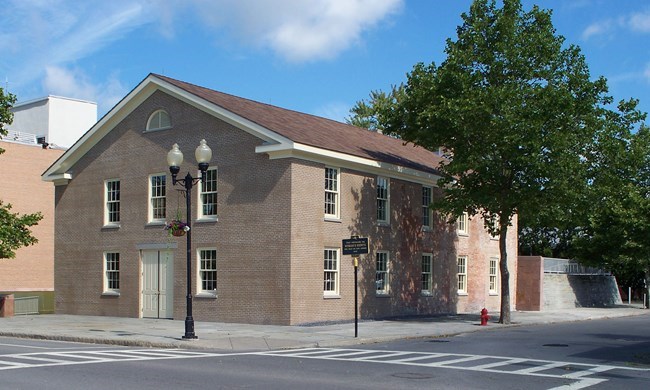
1648
January 21: As an unmarried woman with property, and serving as the lawyer for Lord Baltimore, Margaret Brent demands but is denied a vote in Maryland’s colonial assembly.
January 21: As an unmarried woman with property, and serving as the lawyer for Lord Baltimore, Margaret Brent demands but is denied a vote in Maryland’s colonial assembly.
1756
- October 30: Lydia Taft, recent widow of Josiah Taft, of Uxbridge, Massachusetts, is allowed to vote as Josiah’s proxy at a town meeting. The vote was regarding the town’s involvement in the French and Indian Wars. Lydia is the first white woman to vote in what was to become the United States. (Women in many Native American tribes were leaders and influenced decisions long before Europeans arrived.)
- July 2: The New Jersey constitution of 1776 is adopted. It allows all residents who own a specific amount of property to vote, without reference to gender or race. Thus, unmarried or widowed women (Black and white) and Black men could vote if they met the other requirements. Married women could not vote because legally they could not own property (all of their property reverted to their husbands upon marriage).
- May to September: The United States Constitutional Convention is held at what is now Independence Hall in Philadelphia. At the convention, it is decided that states have the right to determine qualifications required to vote.
- March 26: The Naturalization Act of 1790 passes. It allows white men born outside of the United States to become citizens. Because the ability to decide voting requirements is held by the states, becoming a citizen does not automatically confer voting rights.
- The Acts of the Fifteenth General Assembly of New Jersey refer to voters as both “he” and “she.”
1807
- The New Jersey legislature limits the vote to “free, white, male citizens” as a means of favoring the party in power.
- Kentucky passes a statewide woman suffrage law that grants the vote to female heads of household in elections deciding on taxes and schools.
1840
- June 12-23: Elizabeth Cady Stanton, Lucretia Mott, and other women are excluded from the 1840 World Antislavery Congress in London. Permitted to attend as spectators, they are not allowed to take part. In response, Elizabeth Cady Stanton and Lucretia Mott resolve to “form a society to advocate the rights of women.”
- June 1 through October 9: A New York State Constitutional Convention is held. Six property-owning women from the state petition the Convention, demanding “equal, and civil and political rights” enjoyed by white men in the state. Their demands are denied.
- July 19-20: A Women’s Rights Convention is held in Seneca Falls, New York. Three hundred attend the convention organized in part by Elizabeth Cady Stanton. Frederick Douglass is one of those present. One hundred of the attendees sign the Declaration of Sentiments, which includes a call for women’s access to the vote.
- A Michigan Senate committee proposes that the state adopt universal suffrage. The proposal dies in committee because woman suffrage is viewed as “unusual” and “needless.”
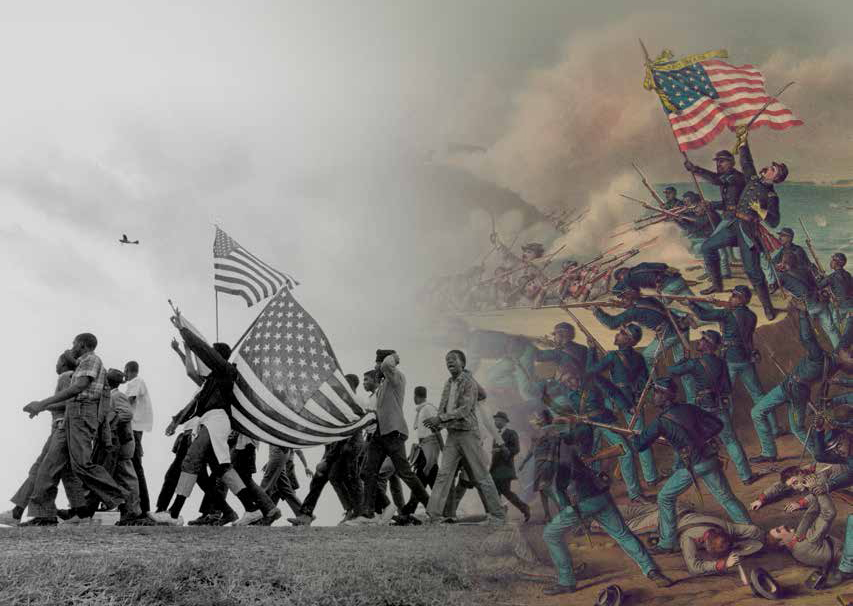
Cover of the NPS Civil War to Civil Rights Summary Report.
1850
- October 23-24: The First National Women’s Rights Convention is held in Worcester, Massachusetts. Almost 1,000 men and women from eleven states (including California) attend.
- May 29: Sojourner Truth gives her “Ain’t I a Woman” speech at a Women’s Convention in Akron, Ohio.
- October 15-16: The Second National Women’s Rights Convention is held in Worcester, Massachusetts.
- September 8-10: The Third National Women’s Rights Convention is held in Syracuse, New York.
- October 6-8: The Fourth National Women’s Rights Convention is held in Cleveland, Ohio.
- October 18-20: The Fifth National Women’s Rights Convention is held in Philadelphia.
- The Territorial Legislature of Washington considers a law granting women the right to vote. It is defeated by a single vote. Shortly after, the Territorial Legislature passes a law stating that “no female shall have the right of ballot or vote.”
- October 17-18: The Sixth National Women’s Rights Convention is held in Cincinnati, Ohio. The crowd is standing-room only.
- November 25-26: The Seventh National Women’s Rights Convention is held in New York City.
- March: The US Supreme Court rules in Dred Scott v. Sandford that the US Constitution is not meant to include Black people as citizens. The Dred Scott decision is later overturned by the Thirteenth Amendment to the US Constitution (abolishing slavery) and the Fourteenth Amendment to the US Constitution (conferring citizenship on all persons born or naturalized in the United States).
- Iowa’s new state constitution includes “white” in the description of who can vote.
- May 13-14: The Eighth National Woman’s Rights Convention is held in New York City.
- May 12: The Ninth National Woman’s Rights Convention is held in New York City.
1860
- May 10-11: The Tenth National Woman’s Rights Convention is held in New York City. Up to 800 people attended.
- January 29: Kansas Territory becomes the state of Kansas. The state’s constitution includes the rights of women to participate in school district elections.
- April 12: The US Civil War starts. Suffrage activity across the country is minimal, as people focus on the war effort.
- Women in Oregon who are widows and have children and taxable property are granted the vote in school elections. Women of color are excluded due to restrictions on property ownership.
- May 9: The US Civil War ends
- May 10: The Eleventh National Women’s Rights Convention is held in New York City. Black and white attendees form the American Equal Rights Association to argue for universal suffrage: access to the ballot “irrespective of race, color, or sex.”
- The election laws in Washington Territory states that “all white citizens” can vote, opening the ballot again to women. This interpretation is untested until 1869.
- June 1867 to February 1868: At the New York State Constitutional Convention, delegates vote 125 to 19 to give the vote to Black men, but not to women. The state’s voters reject this new constitution altogether in the 1869 elections, and neither group receives the vote.
- October: Women in Vineland, New Jersey form the Vineland Equal Rights Association and petition the state for “Impartial Suffrage, Irrespective of Sex or Color.”
- The Impartial Suffrage Association in Kansas is organized to fight for two amendments to the state constitution: one to remove “white” and one to remove “male” from the state’s voting requirements. Both efforts fail.
- Michigan’s Legislature allows women who pay taxes the right to vote for school trustees.
- March: Congressman George Washington Julian, representing Indiana, introduces what at the time would have been the Sixteenth Amendment to the US Constitution recognizing women’s suffrage. It is defeated.
- July 9: The Fourteenth Amendment is adopted. It defines who is a citizen of the United States: “All persons born or naturalized in the United States, and subject to the jurisdiction thereof, are citizens of the United States and of the State wherein they reside.” Women, therefore, are citizens (unless part of a group excluded from this amendment). After this, questions of what rights and responsibilities come with citizenship are debated.
- November: The New England Woman Suffrage Association is founded, with Julia Ward Howe (composer of the Battle Hymn of the Republic) as president. Lucy Stone serves on the executive committee, and later becomes president of the organization.
- December: Congressman George W. Julian of Indiana introduces language for a constitutional amendment for universal suffrage: “The right of suffrage in the United States shall be based on citizenship, and shall be regulated by Congress, and all citizens of the United States, whether native or naturalized, shall enjoy this right equally, without any distinction or discrimination whatever founded on race, color, or sex.” It does not pass.
- Iowa citizens vote to remove “white” from the state constitution’s description of who could vote. This gives Black and Native American men the vote by law (though not necessarily in practice).
- January 19: The Twelfth (and final) National Women’s Rights Convention is held in Washington, D.C.
- May 12: The American Equal Rights Association undergoes a painful split at their annual meeting. Attendees include Frederick Douglass, Lucy Stone, Elizabeth Cady Stanton, and Susan B. Anthony. At the meeting, Frederick Douglass argues that Black men’s right to vote should take precedence over women’s right to vote, “With us, the matter is a question of life and death.” Anthony replies that, despite that, Douglass “would not exchange his sex.” Lucy Stone states that “woman suffrage is more imperative than his own.”
- May 15: The National Woman Suffrage Association (NWSA) is established by Elizabeth Cady Stanton, Susan B. Anthony, and others.
- November: The American Woman Suffrage Association (AWSA) is founded, led by Lucy Stone. The group is made up largely of members of the New England Woman Suffrage Association.
- December 10: Women in Wyoming Territory are granted unrestricted suffrage.
- Mary Olney Brown attempts to vote in Olympia, Washington Territory and is turned away because she is not considered a citizen.
- The Nevada state legislature passes an amendment removing the words “male” and “white” from the state voting requirements. To become law, the amendment has to pass in two sessions of the legislature; the second legislature meets in 1871.
- At a state women’s suffrage convention in St. Louis, Missouri, Virginia Minor argues that “the Constitution of the United States gives me every right and privilege to which every other citizen is entitled.” Later the same year, she and her husband circulate pamphlets arguing that the Fourteenth Amendment grants women the vote by right of citizenship. In the following years, hundreds of women across the country go to the polls using this logic. Most are denied; some are arrested.
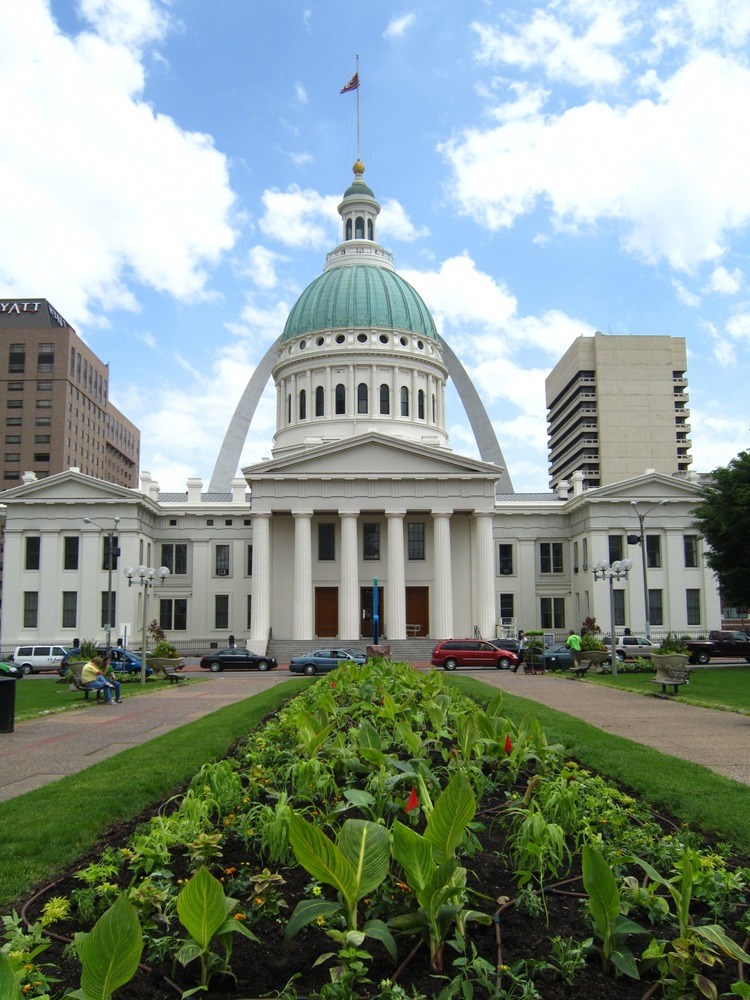
- February 12: The Utah Territory grants all women over the age of 21 years suffrage in any election.
- March 30: The Fifteenth Amendment becomes law. It prohibits exclusion from voting “on account of race, color, or previous condition of servitude.” In response, many former Confederate states pass Jim Crow laws that disenfranchise Black and poor white men from voting through poll taxes, literacy tests, and other restrictions.
- April 2: Victoria Woodhull announces her candidacy for President of the United States in a letter to the editor of the New York Herald.
- June 6: Mary Olney Brown again tries to vote in Olympia, Washington Territory, and is denied. Her sister, Charlotte Olney French and seven other women successfully vote in Grand Mound, Washington. Eight women in the Black River precinct of the state also successfully vote.
- A woman suffrage amendment to the Vermont state constitution is soundly defeated at the constitutional convention.
- Michigan’s legislature approves woman suffrage; the law is vetoed by the governor.
- January 11: Victoria Woodhull testifies to the Judiciary Committee of the United States House of Representatives (the first woman to address a House committee). She argues that the Fourteenth Amendment grants women the right to vote. The committee disagrees.
- October: Carrie Burnham tries to vote in Philadelphia. She argues that the Fourteenth Amendment and Pennsylvania law guaranteeing the vote to “freemen” allow her to vote. Election officials refuse to let her. Her case goes to the state Supreme Court. They issue their decision in 1873.
- The Nevada legislature votes against the woman suffrage legislation it had approved in 1869. Woman suffrage fails in Nevada until 1914.
- New Mexico denies woman suffrage.
- Mary Ann Shadd Cary and a group of over sixty women try to register to vote in Washington, DC. They are unsuccessful.
- May 10: Victoria Woodhull is nominated for President of the United States by the Equal Rights Party. Her platform supports woman suffrage and equal rights. Frederick Douglass is nominated as her Vice Presidential running mate. Not present at the meeting, he never acknowledges the nomination.
- October 15: In St. Louis, Missouri, Virginia Minor is not allowed to register to vote. She and her husband sue. The case is eventually decided by the US Supreme Court, who issue their decision in 1875.
- November 5: The Woodhull/Douglass Presidential ticket receives a very small percentage of the popular vote nationwide, and no electoral votes.
- November 5: Four women in Portland, Oregon (including one African American woman) turn out to vote in the presidential election. The election judge accepts their ballots, but does not put them into the ballot box. Their votes are not counted.
- November 5: Susan B. Anthony is one of several women in Rochester, New York to vote in the presidential election. Anthony is arrested and charged with voting illegally. Her case is heard by a federal court, who issue their decision in 1873. The other women who voted are arrested but not charged. The election inspectors who allowed the women to vote are arrested and found guilty. President Ulysses S. Grant pardons them after they are jailed for refusing to pay their fines.
- The Dakota Territorial Legislature defeats woman suffrage by a single vote.
- Iowa’s General Assembly rejects a woman suffrage resolution.
1873
- April 4: The Supreme Court of Pennsylvania rules against Carrie Burnham.
- June: In United States v. Susan B. Anthony, the court concludes that citizenship does not automatically confer the right to vote. Susan B. Anthony is convicted of voting without having the right to do so. She is fined $100 for voting; she never pays. Because the judge rules that Anthony will not be jailed for failure to pay, her case cannot move to the US Supreme Court.
- December 16: Pennsylvania’s 1873 constitution is ratified. It replaces the words “white freeman” with “male citizens,” affirming the Fifteenth Amendment. It continues to exclude women. The new constitution goes into effect as of January 1, 1874.
- November: The Woman’s Christian Temperance Union (WCTU) is founded in Cleveland, Ohio.
- Michigan votes on a woman suffrage referendum. It is defeated by more than three-to-one.
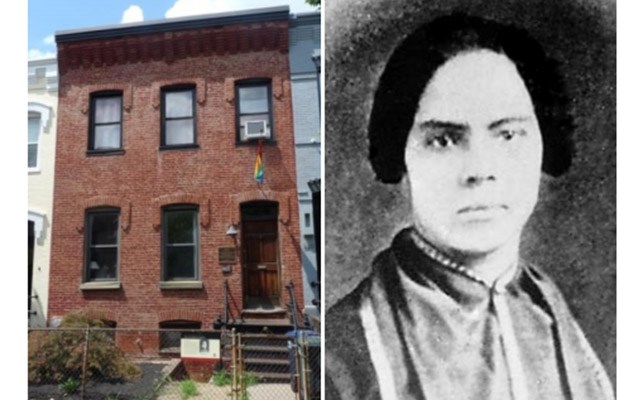
Right: Mary Ann Shadd Cary, courtesy of the National Archives of Canada (C-029977).
1875
- March 29: The US Supreme Court decides Virginia Minor’s case. She argues that Missouri’s limiting of the vote to men is unconstitutional. While the court agrees that women are citizens and therefore “entitled to all the privileges and immunities of citizenship,” voting is not one of them. “The Constitution,” they write, “does not confer the right of suffrage upon any one.”
- Women in Minnesota gain the right to vote in school board elections.
- January 10: An amendment is introduced to the US Senate recognizing women’s right to vote. Introduced by Senator Aaron Sargent of California, it is modeled on the Fifteenth Amendment. The Senate does not vote on the amendment until 1887.
- New Hampshire approves school suffrage for women.
- An Oregon law goes into effect removing marital status (“widow”) from the 1862 qualifications for women to vote.
1880
- Early 1880: New York State women gain the right to vote in school elections.
- February 18: Thirteen women in Syracuse, New York register and vote, the first time women had legally voted in the state since 1777.
- Vermont’s state legislature gives tax-paying women the right to vote in school elections.
- Mary Ann Shadd Cary establishes the Colored Women’s Franchise Association in Washington, DC. The organization links suffrage to political rights as well as education and labor issues.
- At their National Convention in Washington, DC, the Woman's Christian Temperance Union formally endorses woman suffrage. They believe that women will vote to protect their homes from evils like alcohol. They support limiting access to the vote to those who can pass an educational test.
- The first volume of The History of Woman Suffrage is published by Susan B. Anthony, Matilda Joslyn Gage, Ida Husted Harper, and Elizabeth Cady Stanton. It excludes women of color from what became the popular history of woman suffrage. Five more volumes are published through 1922.
- January 9: The United States Senate forms a Select Committee on Woman Suffrage to consider “all petitions, bills, and resolves asking for the extension to suffrage to women or the removal of their legal disabilities.” The committee is disbanded in 1921.
- The Washington Territorial Legislature passes a law granting the vote to “All American citizens, above the age of twenty-one years, and all American half-breeds, over that age, who have adopted the habits of the whites, and all inhabitants of this territory above that age… Whenever the word ‘his’ occurs [in this law], it shall be construed to mean ‘his or her,’ as the case may be.” White women and Metis who have assimilated into white society vote in the territory for four years. In 1887, the Washington Territorial Supreme Court invalidates the law.
- November 3: The United States Supreme Court decides in Elk v. Wilkins that Native Americans are not eligible to vote in US elections, even if they own property and pay taxes. Their logic is that they are citizens of Indian nations, not of the United States – even if, like John Elk, they have given up their tribal affiliation and culture.
- Oregon voters defeat a referendum to add woman suffrage to the state constitution by almost three-to-one.
1885
- Both houses of the Dakota Territorial Legislature pass a bill for woman suffrage. It is vetoed by the Governor.
- Sarah Garnet establishes the Brooklyn Colored Woman’s Equal Suffrage League, the first organization of Black women devoted solely to suffrage.
- Early 1887: Kansas passes a law granting women the vote in municipal elections state-wide.
- January 25: The women’s vote amendment first introduced to the US Senate in 1878 is defeated.
- February 8: The Dawes Act grants US citizenship to Native Americans, but only those willing to give up their tribal membership, lands, and culture. Despite being citizens, Native Americans are still considered “wards” of the federal government, and therefore generally forbidden to vote in US local, state, or federal elections.
- March 3: The Edmunds-Tucker Act becomes effective (the US Congress had passed the law on March 22, 1882). The Act is written to limit polygamy among members of the Church of Jesus Christ of Latter-day Saints (Mormons). The Act removes the right to vote from all Utah women and from men with multiple wives.
- April 6: Rhode Island voters defeat a woman suffrage referendum by a margin of almost four to one.
- The Washington Territorial Supreme Court overturns the territory’s 1883 suffrage law. They argue that Congress had not intended to give territories the authority to enfranchise women.
- Elizabeth Cady Stanton, Susan B. Anthony and others establish the International Council of Women at a meeting in Washington, DC. The organization advocates internationally for women’s rights, including suffrage.
- September 30: The Wyoming state convention approves a constitution that includes woman suffrage. It goes into effect when Wyoming becomes a state in 1890.
- Woman suffrage is considered to be added to Washington’s new state constitution. The woman suffrage measure fails to pass.
1890
- February 18: The National Woman Suffrage Association and the American Woman Suffrage Association merge to form the National American Woman Suffrage Association
- March 27: Washington state women are granted the right to vote in some local school district elections.
- July 10: Wyoming becomes a state. With woman suffrage included in its new state constitution, Wyoming becomes the first state with woman suffrage.
- November 4: An amendment to the state constitution to add woman suffrage is defeated in South Dakota by a margin of two-to-one.
- New Mexico denies woman suffrage.
- Women in Illinois are given the right to vote for school officers.
- Colorado state voters pass woman suffrage with 55% of the vote.
- August: The New York State constitutional convention votes 97 to 58 against woman suffrage.
- Women in Iowa are granted the right to vote on school issues.
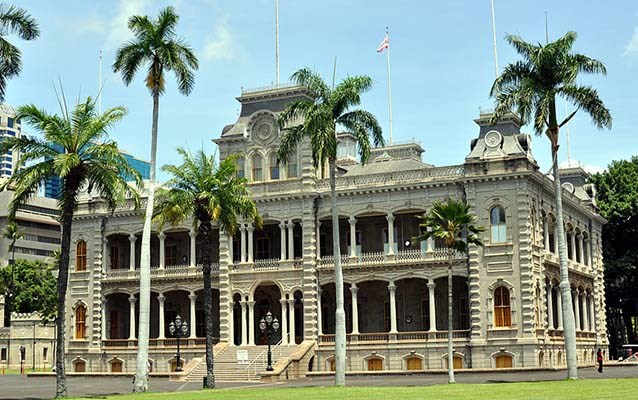
'Iolani Palace, Honolulu, Hawai'i. Photo by D. Ramey Logan, 2011. CC BY SA 3.0.
1895
- July: The National Conference of the Colored Women of America convenes, organized by Josephine St. Pierre Ruffin and the Woman’s Era Club. From this meeting comes the Federation of African-American Women, the forerunner of the National Association of Colored Women (founded in 1896). These groups focus in part on woman suffrage, as well as other issues affecting Black women.
- January 4: Utah becomes a state. Woman suffrage is included in the new state constitution, restoring women’s right to vote taken away by the 1887 Edmunds-Tucker Act.
- July: The National Association of Colored Women is founded. Members advocate for woman suffrage and women’s rights.
- November 3: A woman suffrage amendment to the California constitution is on the ballot. It receives 44.6% of the vote, and fails.
- November 3: Idaho voters vote in favor of adding woman suffrage to the state constitution.
- March: Women in Eugene, Oregon are prevented from voting in local school elections, despite the law of 1878. Suffragist Laura Harris sues. The Oregon Supreme Court issues their decision (Harris v. Burr) in 1898.
- June 4: The Constitution of the State of Delaware is adopted. It retains “male” as a qualification for voting, despite attempts to remove the requirement.
- Voters in New Jersey defeat a proposal to allow women to vote in school elections.
- Voters in the Oklahoma Territory defeat a proposal for women's access to the vote.
- August 12: The Territory of Hawai’i is established. Woman suffrage is explicitly left out of the territorial constitution. The last indigenous ruler of the islands, Queen Lili’uokalani, is removed from power by the United States in 1893.
- The Delaware State Legislature passes a law allowing taxpaying women to vote in school elections.
- Voters in the Oklahoma Territory again defeat a proposal for women's access to the vote.
1900
- Oregon voters closely defeat a referendum to add woman suffrage to the state constitution. The pro-suffrage vote was 48%.
- February 12-18: The First Conference of the International Woman Suffrage Alliance is held. Women from ten nations meet in Washington, DC to discuss organizing around international woman suffrage.
- New Hampshire voters defeat a woman’s suffrage referendum.
- March 10: In a referendum, voters in New Hampshire defeat a woman suffrage amendment to the state’s constitution.
- October 10: Emmeline Pankhurst and her daughter Christabel establish the Women’s Social and Political Union in England. Their militant tactics inspire US suffragists, including Alice Paul.
- November 9-23: The annual convention of the American Federation of Labor is held in Boston. At the convention, the Women’s Trade Union League (WTUL) is established. The WTUL argues for woman suffrage as a means of improving working conditions; they are instrumental in fostering the support of working men for woman suffrage.
1906
- A referendum on the Oregon ballot for woman suffrage fails, with 44% support.
- Harriot Stanton Blatch (daughter of Elizabeth Cady Stanton) establishes the Equality League of Self-Supporting Women (later the Women’s Political Union). Members are professional and industrial working women, emphasizing the connection between woman suffrage and labor. As part of their work, they organize suffrage parades.
- The Oklahoma Constitutional Convention meets prior to Oklahoma Territory becoming a state. In the face of strong opposition (that voting would undermine women's role of homemaker and a desire to keep African American women from voting), the new state's constitution allowed women to vote only in school elections. It becomes law in 1907.
- March 2: The Expatriation Act becomes law. It stipulates, in part, that a woman will lose her US citizenship if she marries a foreign man, since she thereby assumes the citizenship of her husband. There is no corresponding loss of citizenship when an American man marries a foreign woman.
- November 16: Oklahoma becomes a state, and women receive the right to vote in school elections only in the new state Constitution.
- December 31: Organized by Maud Malone of the Harlem Equal Rights League, the first open-air suffrage meeting is held in Madison Square Park, New York City.
- February 16: Members of New York City’s Women’s Progressive Suffrage Union march from Union Square to the Manhattan Trade School. Denied a permit and despite police attempts to break them up, the Suffrage Union finishes their march. This is the first suffrage march in the United States.
- A referendum on the Oregon ballot for woman suffrage fails, with 36% support.
- February 12: The National Association for the Advancement of Colored People (NAACP) is established in New York City by white and Black members. The NAACP became an important organization in the fight for suffrage, both for women and for Black men in the South.
- February 28: Women workers in New York City observe National Woman’s Day, in part demanding women’s right to vote. Now held on March 8, it is celebrated around the world as International Women’s Day.
- November 9: Alice Paul is arrested in London for smashing a window during a suffrage protest. She is sentenced to one month of hard labor. She is in England from 1908 to 1909, doing graduate studies at the London School of Economics. During this time, she is arrested seven times and imprisoned three times.
- A woman suffrage bill is introduced in the Iowa State Senate. It is defeated.
1910
- May 21: Approximately 10,000 people gather in New York City’s Union Square at what was, at the time, the largest woman suffrage demonstration held in the United States.
- October 3-November 21: The New Mexico Constitutional Convention meets in Santa Fe. They establish a constitution that permits women to vote only in school board elections. It comes into effect when New Mexico becomes a state on January 6, 1912.
- November 8: Washington voters support a woman suffrage amendment to the state constitution. The measure passes with nearly 64 percent support.
- The Women’s Political Union organizes their first suffrage parade in New York City.
- A referendum on the Oregon ballot for woman suffrage fails, with 37% support.
- March 25: The Triangle Shirtwaist Fire in New York City results in the deaths of 145 workers. The tragedy spurs increased collaboration between working women and middle-class reformers, who advocate for woman suffrage as a way to change working conditions.
- May 6: The second annual New York City suffrage parade is held. At least 3,000 people take part. It concludes with a rally in Union Square. About 10,000 people attend.
- October 10: California voters approve a woman suffrage measure on the state ballot. Women win the vote across the state with 50.7 percent of the vote.
- Nevada’s legislature passes the first of two required measures for woman suffrage. The next is considered by the new legislature in 1913.
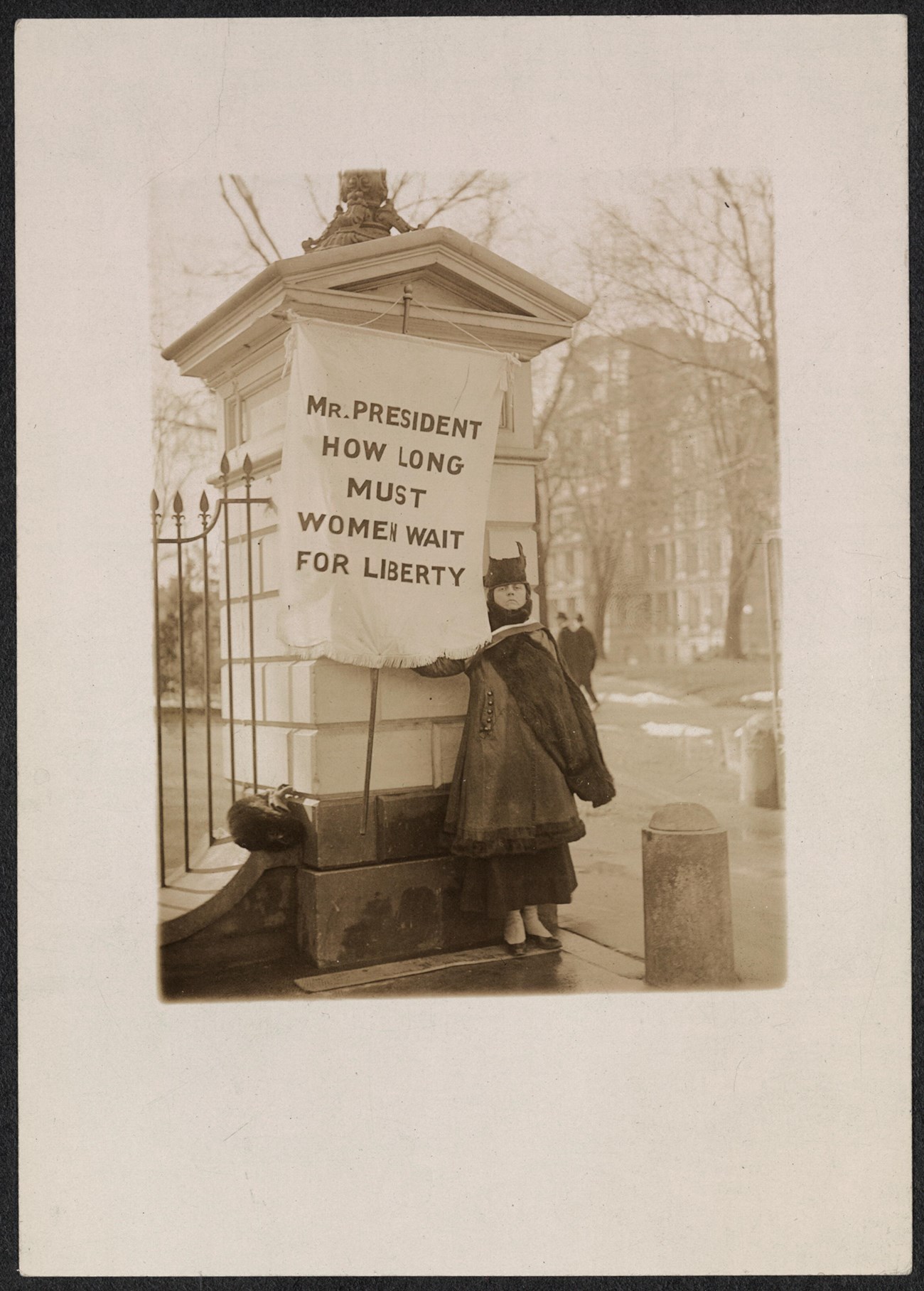
https://www.loc.gov/item/mnwp000222/
- February 14: Arizona becomes a state, but its constitution does not guarantee women’s access to the vote. In response, the Arizona Equal Suffrage Association gathers enough signatures to add a referendum measure to the November 1912 ballot.
- May 4: The third annual New York City suffrage parade attracts 20,000 marchers and half a million spectators.
- May 19: Tye Leung Shulze of California becomes the first Chinese person in America to vote.
- November 5: The Arizona woman suffrage referendum passes by a margin of two-to-one.
- November 18: Oregon citizens vote in a woman suffrage referendum. The referendum passes with 52% in favor.
- In Michigan, the governor calls for a vote on woman suffrage, for which there is strong support from many interests. On first count, suffrage passes. Alcohol lobbyists, angered by Woman's Christian Temperance Union support for woman suffrage, demand a recount. The recount, which many believe was tampered with, shows a defeat of woman suffrage by 700 votes.
- Kansas grants women full suffrage as part of a state constitutional amendment recognizing universal suffrage.
- January 30: Ida B. Wells-Barnett establishes the Alpha Suffrage Club, the first Black women’s suffrage organization in Illinois.
- March: The Alaska Territorial Legislature passes woman suffrage as its first order of business following the establishment of the Alaska Territory. It grants the vote “to such women as have the qualifications of citizenship required of male electors.” It excludes Alaska Natives.
- March 3: The Woman Suffrage Procession, organized by Alice Paul and The Congressional Union, marches through the streets of Washington, DC on the eve of Woodrow Wilson’s presidential inauguration. The parade, the largest yet held, draws as many as half a million people to watch. Paraders are attacked by mobs; Boy Scouts provide some protection and first aid to some of the hundreds of women who are injured. No arrests are made.
- April: Alice Paul and Lucy Burns take control of the Congressional Union, formerly a committee of the National American Woman Suffrage Association.
- June 26: Illinois grants women the vote in presidential elections.
- Nevada’s legislature passes the second measure for woman suffrage required for the law to move forward. The measure goes to the state’s voters for final approval in 1914.
- New York State passes a law granting women the vote regarding taxation, but only in towns and villages (not in incorporated cities).
1914
- November 3: Montana grants women the vote via referendum, with a 52.2 percent majority.
- Nevada’s voters weigh in on a woman suffrage amendment approved in 1913 by the legislature. The amendment passes easily.
- The United States Senate votes on the “Susan B. Anthony” amendment that would grant woman suffrage. It fails.
- January 12: A woman’s suffrage amendment reaches the US House of Representatives. It is defeated by a vote of 174 to 204.
- February: Puck, a leading humor magazine that had routinely mocked suffragists, publishes an entire pro-suffrage issue.
- October: New Jersey state voters defeat a referendum to add woman suffrage to the state constitution.
- November 2: New York state voters narrowly defeat a referendum to add woman suffrage to the state constitution.
- The Alaska Territorial Legislature recognizes the right of Indigenous people to vote, on the condition they give up their tribal customs and traditions.
- Pennsylvania voters defeat a state referendum on woman suffrage.
- June 5: Alice Paul and the Congressional Union break completely with the National American Woman Suffrage Association and form the National Woman’s Party.
- June 5: Iowa voters fail to pass a referendum for woman suffrage.
- November: Jeannette Rankin is elected to represent Montana in the US House of Representatives. She is the first woman elected to US Congress. She takes office in March 1917.
- November 7: Voters defeat a woman suffrage amendment in South Dakota. Woman suffrage fails with 48 percent of the vote.
- December 2: President Woodrow Wilson, who is against woman suffrage, sails to the Statue of Liberty on the occasion of its re-electrification. A plan to rain “Votes for women” leaflets down on his yacht from a bi-plane piloted by Leda Richberg-Hornsby was foiled by weather.
- January: The National Woman’s Party organizes “Silent Sentinel” pickets outside the White House, the first time the White House is picketed by protesters. The pickets continue through early 1919.
- March 4: Jeannette Rankin takes office.
- April 21: Nebraska women win partial suffrage; they can vote in municipal elections and for presidential electors.
- May 8: Michigan woman gain access to the vote for US President.
- June: Police begin arresting Silent Sentinels. Over the next two years, more than 500 women are arrested and 168 of them incarcerated. Many of those jailed at Occoquan Workhouse in Virginia go on hunger strikes, and are force-fed.
- November 6: New York voters approve a woman suffrage amendment to the state constitution, with 59% voting for it.
- November 14: The “Night of Terror” at the Occoquan Workhouse. Jailed “Silent Sentinels” are beaten, chained in stress positions, and rendered unconscious.
- November 27-28: All Silent Sentinels are released from prison after public outrage over their treatment.
- Vermont’s state legislature approves woman suffrage for municipal elections
- Arkansas allows women to vote in state primaries, but not in general elections.
- Rhode Island opens presidential voting to women.
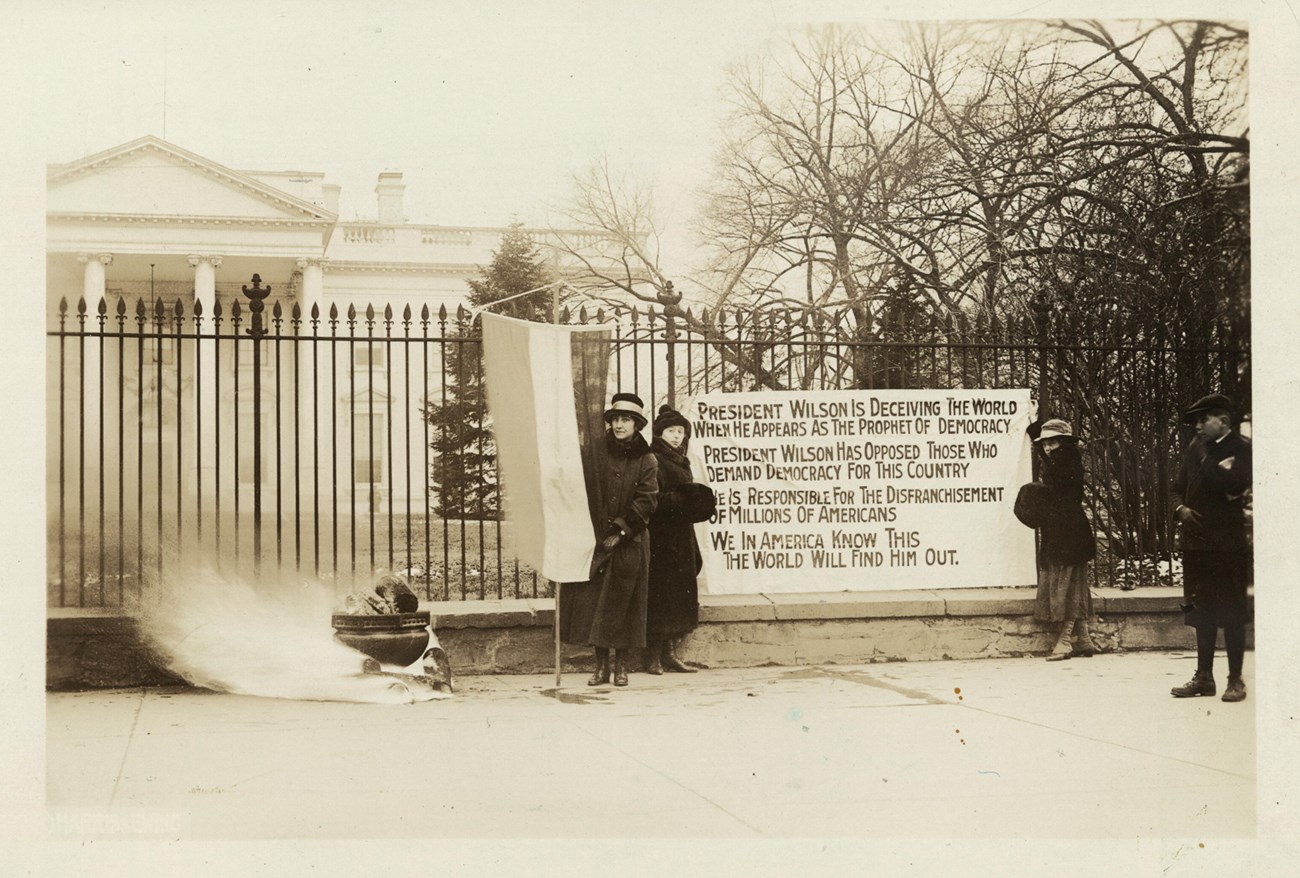
Photo by Harris & Ewing. Records of the National Woman's Party, Library of Congress. https://www.loc.gov/item/mnwp000303/
- January 9: President Woodrow Wilson gives a speech promoting the United States as a beacon of democracy. He urges Congress to support woman suffrage as a war measure.
- January 10: Congresswoman Jeannette Rankin of Montana introduces the 19th Amendment to the US House of Representatives. The Amendment passes 274 to 136 that same day and moves to the Senate.
- January 11: The US Senate votes on the 19th Amendment. The vote is short by two of the needed two-thirds majority required to pass.
- November 5: South Dakota voters approve full woman suffrage in a state-wide referendum. The vote was 63% for; 37% against.
- November 5: Oklahoma voters approve a state constitutional amendment for full woman suffrage in a state-wide referendum. The vote was 106,909 in favor to 81,481 against.
- Michigan voters approve a state constitutional amendment granting women full suffrage.
- January: National Woman’s Party lights a “Watchfire for Freedom.” They guard it and keep it lit until the 19th Amendment passes the US Senate on June 4.
- February: National Woman's Party campaigners begin the "Prison Special" train tour to share their experiences serving jail time for demonstrating and raise support for suffrage.
- February 9: Protesters burn President Wilson in effigy in front of the White House.
- April: The Iowa General Assembly grants women in the state the right to vote in presidential elections.
- May 21: The U.S. House of Representatives passes the 19th Amendment legislation
- June 4: The U.S. Senate votes to pass the 19th Amendment legislation-- The race to ratification begins!
- June 10: Michigan, Wisconsin -- The first states to ratify the 19th Amendment.
- June 16: Kansas, New York, Ohio ratify the 19th Amendment.
- June 17: Illinois voted on June 10 in favor of the 19th Amendment, but ratification was not finalized until June 17
- June 24: Pennsylvania ratifies the 19th Amendment
- June 25: Massachusetts ratifies the 19th Amendment
- June 28: Texas ratifies the 19th Amendment
- July 2: Iowa ratifies the 19th Amendment
- July 3: Missouri ratifies the 19th Amendment
- July 24: Georgia votes to reject the 19th Amendment
- July 28: Arkansas ratifies the 19th Amendment
- August 2: Montana, Nebraska ratify the 19th Amendment
- September 8: Minnesota ratifies the 19th Amendment
- September 10: New Hampshire ratifies the 19th Amendment
- September 22: Alabama votes to reject the 19th Amendment
- October 2: Utah ratifies the 19th Amendment
- November 1: California ratifies the 19th Amendment
- November 5: Maine ratifies the 19th Amendment
- December 1: North Dakota ratifies the 19th Amendment
- December 4: South Dakota ratifies the 19th Amendment
- December 15: Colorado ratifies the 19th Amendment
- Tennessee grants women the right to vote in municipal elections.
- January 6: Kentucky, Rhode Island ratify the 19th Amendment
- January 13: Oregon ratifies the 19th Amendment
- January 16: Indiana ratifies the 19th Amendment
- January 27: Wyoming ratifies the 19th Amendment
- January 28: South Carolina votes to reject the 19th Amendment
- February 4: Carrie Chapman Catt founds the League of Woman Voters.
- February 7: Nevada ratifies the 19th Amendment
- February 9: New Jersey ratifies the 19th Amendment
- February 11: Idaho ratifies the 19th Amendment
- February 12: Arizona votes to ratify the 19th Amendment while Virginia votes to reject it
- February 21: New Mexico ratifies the 19th Amendment
- February 24: Maryland votes to reject the 19th Amendment
- February 28: Oklahoma ratifies the 19th Amendment
- March 10: West Virginia ratifies the 19th Amendment
- March 22: Washington ratifies the 19th Amendment
- March 29: Mississippi votes to reject the 19th Amendment
- June 2: Delaware senate votes in favor of the 19th Amendment (11 to 6), but the state house refuses to vote on the measure, killing it.
- July 1: Louisiana votes to reject the 19th Amendment
- August 18: Tennessee becomes the 36th state to ratify the 19th Amendment
- August 26: The 19th Amendment is certified into law by the U.S. Secretary of State as the 19th Amendment to the U.S. Constitution
- September 14: Connecticut ratifies the 19th Amendment
- Anti-suffragists file suit against the Ohio legislature in Hawke v. Smith. They are challenging Ohio’s ratification of the 19th Amendment. The Supreme Court rules that Ohio’s ratification process was constitutional.
1921
- February 8: Vermont ratifies the 19th Amendment
- September 24: The National Woman’s Party begins to campaign for what becomes known as the Equal Rights Amendment. Several revisions to the text are made, but the one that reaches Congress reads, in part, “Equality of rights under the law shall not be denied or abridged by the United States or by any State on account of sex.”
- September 22: The Cable Act becomes effective. This federal law provides a path back to citizenship (and the voting booth) for women who lost their US citizenship by marrying a foreign national after passage of the Expatriation Act of 1907.
- In Fairchild v. Hughes, the US Supreme Court holds that a person living in a state that had granted women suffrage before the 19th Amendment ratification began, could not challenge that ratification process.
- In Lesser v. Garnett, the US Supreme Court holds that the 19th Amendment is constitutional.
- March 6: Delaware ratifies the 19th Amendment
- June 24: The US Congress passes the Indian Citizenship Act, defining Native Americans as US citizens. The Bureau of Indian Affairs sends guidance to their staff across the country clarifying that citizenship does not necessarily include the right to vote. Many states continue to disenfranchise indigenous people; some states responded to the Act by passing laws designed to keep Native Americans from the vote.
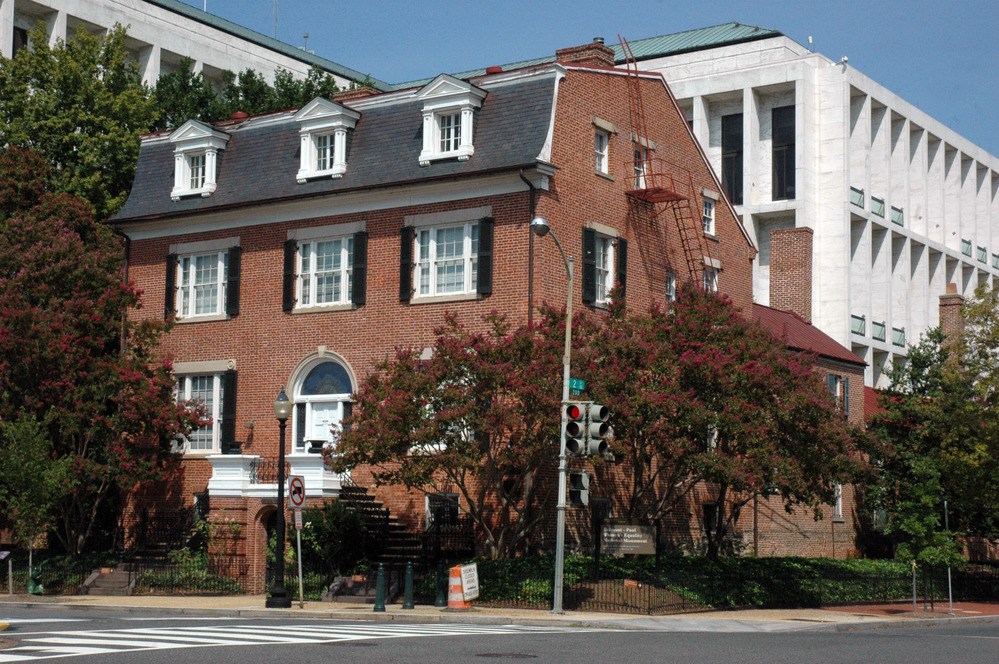
1926
- Zitkala-Ša establishes the National Council of American Indians to lobby for education and civil rights for Native people – including access to the ballot.
- Oscar De Priest, the first African American elected to the United States House of Representatives since Reconstruction, credits Black women’s votes with his success. He takes office in March 1929.
- Literate women in Puerto Rico are granted the vote.
- All women in Puerto Rico are granted suffrage. 1937
- December 6: In Breedlove v. Suttles, the US Supreme Court concludes that poll taxes set by states are constitutional. Poll taxes are used to prevent people with little money (i.e. poor whites, African Americans, Native Americans) from voting.
- March 29: Maryland ratifies the 19th Amendment, but the vote is not certified until February 25, 1958
- December 17: The Magnuson Act becomes federal law. It repeals the 1882 Chinese Exclusion Act, and Chinese immigrants, including women, are able to become US citizens (though rights of property ownership remain restricted). Some already in the US are able to naturalize. The quota for entry visas to the US issued to Chinese citizens is set at 105 per year.
1952
- February 21: Virginia ratifies the 19th Amendment
- June 27: The Immigration and Nationality Act becomes federal law. It abolishes direct racial barriers to US immigration. While Chinese people were allowed to become US citizens by the Magnuson Act of 1943, this law allows Japanese and Korean people, as well as those from other Asian nations, to naturalize as US citizens for the first time.
- September 8: Alabama ratifies the 19th Amendment
- Maryland certifies their 1941 19th Amendment ratification vote
- April 3: The 23rd Amendment to the US Constitution becomes law. It grants residents of Washington, DC the right to vote for US President. Because DC is not a state, residents do not have voting representatives in the US Congress.
- January 23: The 24th Amendment to the US Constitution is ratified. It formally abolishes poll taxes and literacy tests as barriers to voting.
1965
- August 6: President Johnson signs the Voting Rights Act into law. It prohibits racial discrimination in voting. Later amendments to the Act expand its protections.
- March 24: In Harper v. Virginia Board of Elections the US Supreme Court finds that poll taxes at all levels of government are unconstitutional.
- October 15: The National Historic Preservation Act becomes law. It includes the creation of the National Register of Historic Places. The program, which is managed by the National Park Service, identifies and documents historic places with local, state, and national importance. The National Park Service also administers the National Historic Landmark program which recognizes historic places with exceptional national importance. Several places associated with woman suffrage are included in both of these programs.
- April 11: The Civil Rights Act of 1968 becomes law. It prescribes penalties for certain acts of violence or intimidation in certain circumstances. This includes interfering with a person’s access to the vote.
- May 13: Florida ratifies the 19th Amendment.
- July 1: South Carolina ratifies the 19th Amendment; the vote is not certified until August 22, 1973.
1970
- February 20: Georgia ratifies the 19th Amendment
- June 11: Louisiana ratifies the 19th Amendment
- August 10: The Equal Rights Amendment, originally drafted by Alice Paul in the 1920s, passes the United States House of Representatives. It is not brought to a vote in the US Senate.
- May 6: North Carolina ratifies the 19th Amendment
- July 5: The 26th Amendment to the US Constitution is signed into law. It prohibits states and the federal government from preventing US citizens who are at least 18 years old from voting based on their age.
- October 12: The Equal Rights Amendment passes in the US House of Representatives with a vote of 354 for, 24 against.
- March 22: The Equal Rights Amendment passes in the US Senate with a vote of 84 for, 8 against. The Equal Rights Amendment goes to the states for ratification. Thirty-eight states are required to ratify the Amendment for it to become law. It has, so far, failed.
- The Sewall-Belmont House becomes an affiliated unit of the National Park Service as the Sewall-Belmont National Historic Site. The National Woman’s Party has had their headquarters in this Washington, DC building since 1929.
- August 22: South Carolina certifies their 19th Amendment ratification vote of July 1, 1969
- December 28: Women’s Rights National Historical Park is established. It includes several properties associated with the 1848 Women’s Rights convention in Seneca Falls. It is a unit of the National Park Service.
- Mississippi ratifies the 19th Amendment
- The Sewall-Belmont National Historic Site is designated a National Monument. It is incorporated into the National Park Service as Belmont-Paul Women’s Equality National Monument.
